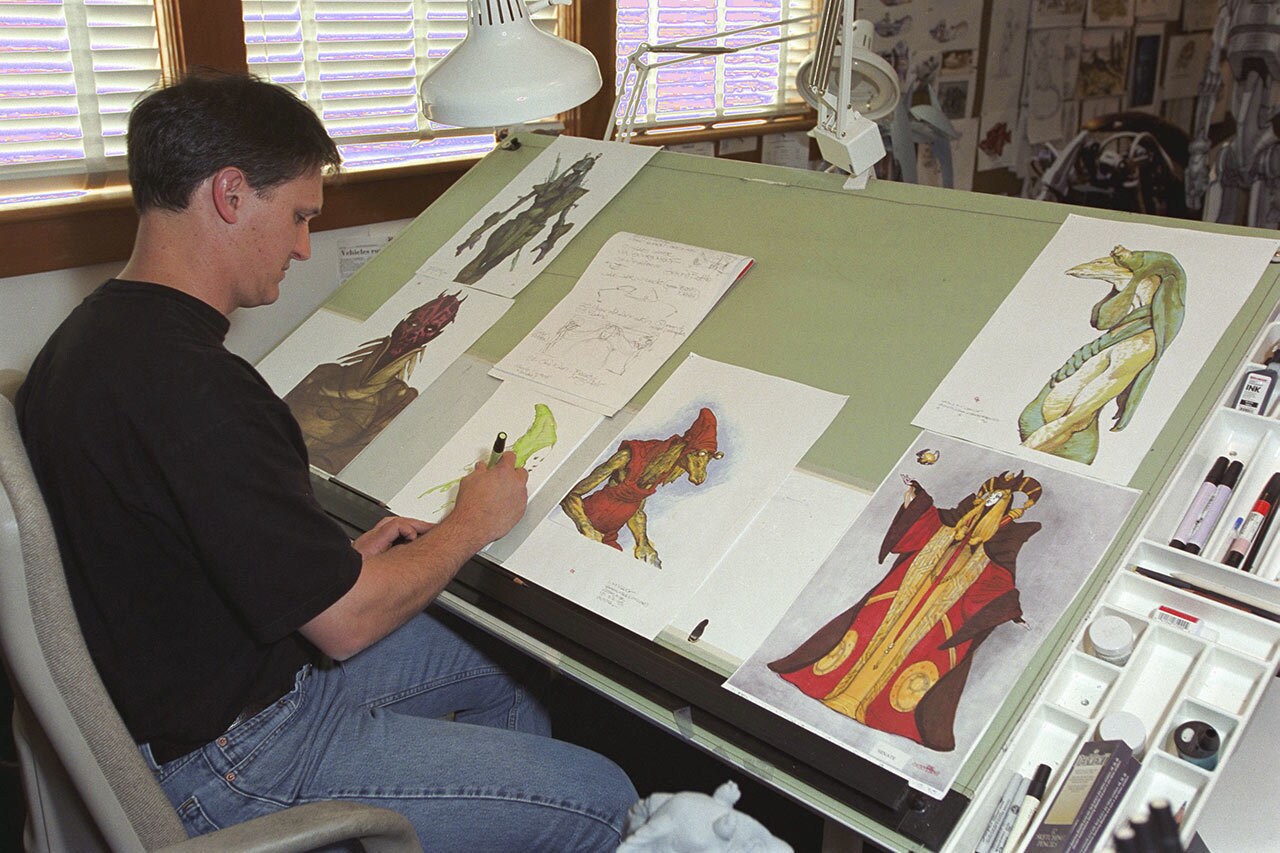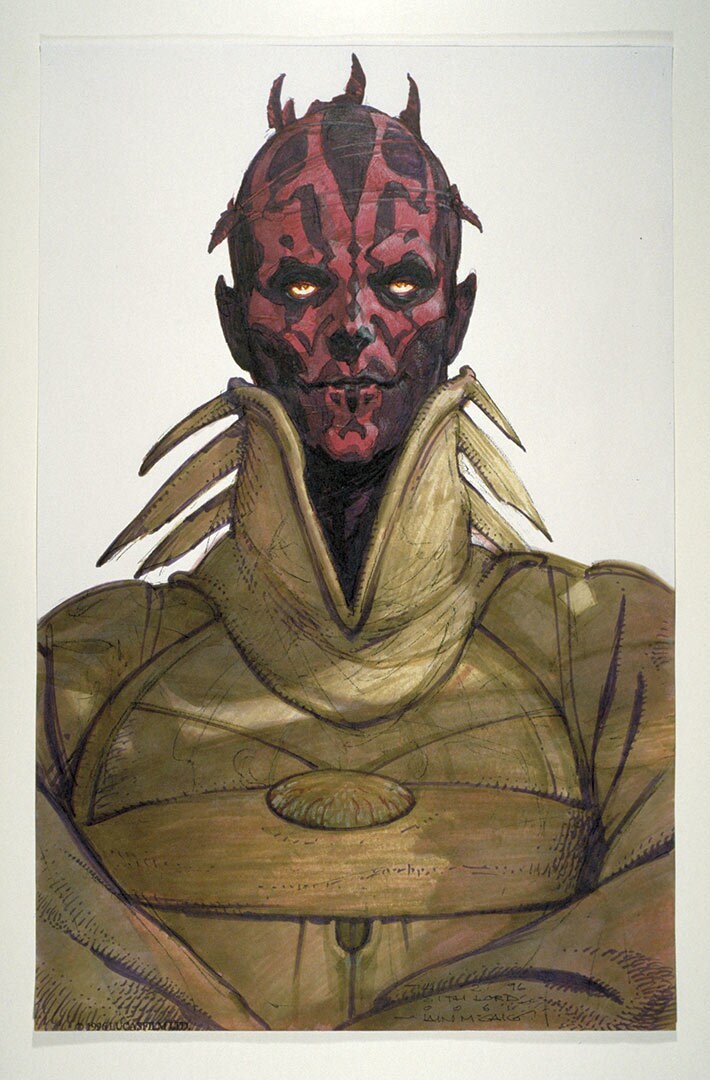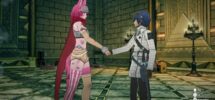To celebrate the 25th anniversary of Star Wars: The Phantom Menace, StarWars.com presents “Phantom at 25,” a special series of interviews and editorials, with the latest article hearing from concept and storyboard artist Iain McCaig on creating Darth Maul.
In 1995, Star Wars: The Phantom Menace (1999) was still two years from starting principal photography and four years from release, but Lucasfilm’s art department at Skywalker Ranch was well underway creating designs and concepts for the innumerable characters, locations, and vehicles in the film. This included a new villain: Darth Maul.
“George [Lucas] just came up and said, ‘Darth Maul, he’s our new Sith Lord,’ and he walked away,” recalls artist Iain McCaig, who by that point had been working primarily on hero characters. “I didn’t know if Maul was male or female, an alien, anything. It freaked me out at the beginning that I didn’t get much direction. Then I realized that maybe he picked me because he liked my work and wanted me to show him what I thought a Darth Maul might look like. George clearly enjoys reacting to visuals. One of his many skills is that he can look at fifty things, make choices, move things around, take a head from this character and put it on the body of that one over there, and suddenly, it’s Star Wars. We learned to trust him and also to trust ourselves.”

McCaig leapt bravely into the void in an attempt to find Maul’s appearance. “Darth Vader was the only Sith Lord we knew back then, so I assumed he would be wearing some kind of helmet,” he explains. “Months of trying to out-helmet Darth Vader went absolutely nowhere.” So McCaig took the helmet off, exploring what might lie underneath. “I thought maybe there’d be some kind of implanted circuitry, something to connect flesh to mask.”
Using his art department colleagues as models, McCaig experimented with a number of designs. “For [previs supervisor] David Dozoretz, I literally put a circuit board on his face. By the time I got to our production designer, Gavin Bocquet, I had simplified the circuitry to tattoos – probably channeling Rorschach from The Watchmen – and suddenly the design started to work.”
By then, McCaig had run out of models, so he used his own face. Serendipitously, George Lucas then delivered his first draft of the screenplay, describing Darth Maul as “a vision from your worst nightmare.” McCaig knew that nightmare all too well. “Working late at night in my studio, I had the eerie feeling I was being watched. My imagination conjured a dead white face pressed against the studio window, glittering eyes staring at me. It grinned sharp metal teeth as it peered, distorted through rivulets of rain. So I drew that face for George, put it in a folder and slid it across to him at the next meeting. He took one look, shrieked, and slapped it closed again. ‘Give me your second worst nightmare,’ he said.

“Don’t get me wrong,” McCaig quickly adds. “I love clowns. But something about those painted expressions scares me, because who knows what they’re really thinking? So I used the markings on Maul’s face to conjure contradictory emotions: malice, but delight; scowling, but grinning like a skull. Every single mark matters. [Actor] Ray Park picked up on that when asked at the first Celebration how he managed to play such a master of evil. ‘Darth Maul’s not evil,’ he said, ‘he’s cheeky.’ You can see that in the iconic scene where he confronts Obi Wan Kenobi and Qui-Gon Jinn. Two Jedi, both bigger than him, and Maul looks like he’s just won the lottery. He doesn’t give a fig about the Trade Federation. He just wants to kick some Jedi ass.”
“I was so certain that design was a bullseye,” McCaig recalls. “So I realized I must be aiming at the wrong target. Of course, it’s obvious in hindsight. Star Wars takes place a long, long time ago. That makes it a mythological nightmare, not an undead serial killer. And boy did I know my worst mythological nightmare. Ever since I saw his white painted face leering at me from an L.A. billboard when I was two years old, I’ve been terrified of Bozo the Clown.”
As for those devilish horns, former Lucasfilm researcher Jonathan Bresman notes in The Art of Episode I that McCaig originally intended them to be feathers. They were “attached by coils of wire which cut into the flesh,” Bresman said. “Black feathers that added a touch of beauty to the face, lending an element of seduction to the dark side.” More than two decades removed, it’s evident that McCaig’s creation has come as close as any Star Wars villain ever has to the iconic Darth Vader, becoming the face of The Phantom Menace’s theatrical, marketing, and licensing campaigns, and remaining as the symbol of the film to this day.

Ironically, McCaig made an attempt after the approved design to re-imagine Darth Maul as a woman. He submitted a black-and-white-faced Sith Witch in a flayed red costume. Lucas liked the design but rejected it for Maul. Years later, he and Dave Filoni brought her to life in Star Wars: The Clone Wars as Mother Talzin, Darth Maul’s mother.
Read the article in full at StarWars.com where McCaig talks Queen Amidala and working with George Lucas.


